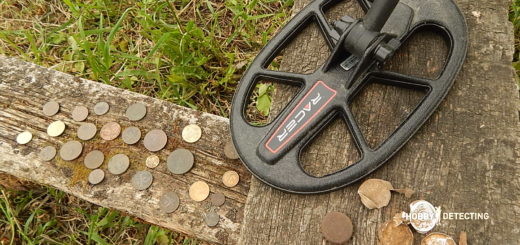Why do I need to ground balance my detector? (Diggers Tips +)
When I had just started to detect, I did not understand anything when the more experienced diggers said strange words: “discrimination”, “Ground Balance”, “mineralization”. Especially, when I bought my first metal detector, I did not even know that it was necessary to do some ground balancing.
Why do I need to ground balance my metal detector?
And did you know that if you do not adjust the ground balance properly, your detector will not display targets correctly? But that’s just half the trouble, one of the worst consequences of ignoring the important settings decreases the depth of your detector! Just imagine all the gold, silver, copper and other interesting finds that will be out of your detector. You will dig corks and rubbish and swear that you have no finds.
Metal detectors are divided into several categories with a number of different functions, prices and coils. One of these functions is the setting “ground balance” which can have different names: the ground balance, soil balance, GB. Based on the features of your device, you may have:
No ground balance – in that case, the manufacturer has probably set the ground balance to an average value for all soils. It can be bad news, of course, because it decreases the effective use of the detector due to permanent changes in sensitivity of the device and its detection depth.
Manual ground balance – this adjustment is performed manually, and when doing this it is necessary to listen to the sound of the soil and to set the value, or, as in most modern digital devices, you can enable the device to set the correct value simply by pumping the coil at a certain distance from the ground. (Experienced detectorists recommend: better to first automatic ground balance, and then to adjust and set the best value manually, thus will achieve the best and most optimal result).
Automatic ground balance – this is a similar solution as described above, but with the difference that the detector keeps track of changes in the soil nature and level of its mineralization, and automatically adjusts the value.
What is strongly mineralized ground?
Everyone knows that the coil creates a certain field, which responds to anomalies in the soil (the finds, let’s call them so). However, it responds to the ground, because the ground can have different levels of mineralization. For example, if you dig in the dry sand, the soil will be neutral, but if the soil is rocky or full of different metals, salts and so on, many detectors will be useless, because they will give you false signals. Such soils are called strongly mineralized. You never know what kind of soil may be in the same field. You may pass by different soils and maybe not even realize that the depth has changed. Because if detecting has become your professional interest, you should think about acquiring a more serious detector.
How often do you have to do the ground balance?
This question I hear a lot from beginners. There is no standard, you can do the ground balance occasionally, for example, once in 10-20 minutes. Or, for example, you can use automatic tracking ground balance, but it may be a minus – in this case you will get a shallower depth than if you had performed a manual balancing. The choice always remains yours.
If you have questions or tips on the subject, then write it in the comments. ?
Good luck!
Liked the tips? Look for more tips, tricks and secrets about detecting? All this in our blog you will find here!









